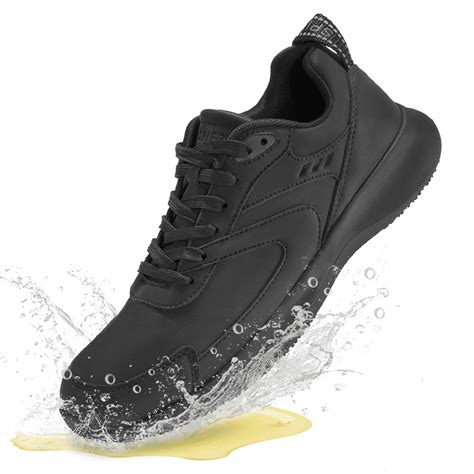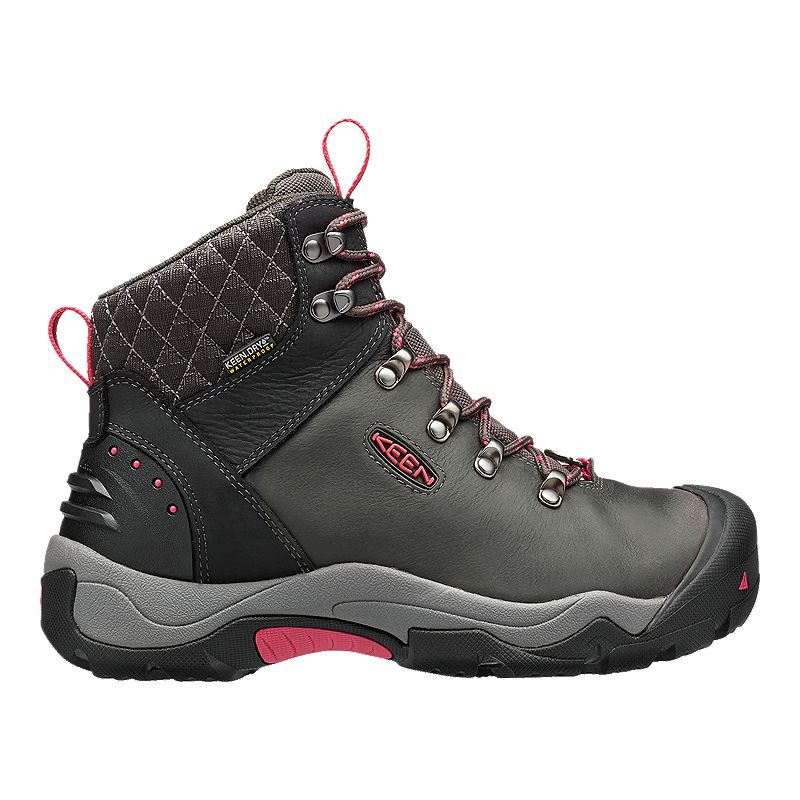Non Slip Waterproof Shoes Guide

The importance of footwear cannot be overstated, particularly when it comes to ensuring safety and comfort in various environments. Non-slip waterproof shoes have become increasingly popular due to their versatility and practicality. Whether you’re working in a hazardous industry, enjoying outdoor activities, or simply need reliable footwear for daily use, understanding the features, benefits, and selection criteria of non-slip waterproof shoes is essential.
Understanding the Need for Non-Slip Waterproof Shoes
Non-slip waterproof shoes are designed to provide traction on slippery surfaces and keep your feet dry in wet conditions. This makes them ideal for individuals who work in industries such as construction, healthcare, or food service, where slips and falls are common hazards. Additionally, for outdoor enthusiasts, these shoes can be a lifesaver, offering stability and comfort during hiking, fishing, or boating activities.
Key Features of Non-Slip Waterproof Shoes
- Waterproofing: Look for shoes with a waterproof membrane, such as Gore-Tex or similar technology, which prevents water from entering the shoe while allowing moisture to escape, keeping your feet dry and comfortable.
- Non-Slip Soles: The outsole should be made of a rubber compound that provides excellent grip on various surfaces, including oil, water, and ice. Slip-resistant shoes often have unique tread patterns designed to maximize traction.
- Breathability: While the shoe needs to be waterproof, it should also be breathable to prevent the buildup of sweat and moisture inside the shoe, which can lead to discomfort and fungal infections.
- Comfort and Support: Adequate cushioning, arch support, and a comfortable fit are crucial for long-lasting wear, especially in work environments where you’re on your feet for extended periods.
- Durability: Non-slip waterproof shoes should be made with durable materials that can withstand the rigors of daily use in challenging conditions.
Selecting the Right Non-Slip Waterproof Shoes
When choosing non-slip waterproof shoes, consider the following factors:
- Purpose: Determine the primary use of the shoes. Different activities and work environments may require specific features.
- Fit: Ensure the shoes fit well. A proper fit is essential for comfort and preventing blisters.
- Material: Decide on the material based on your needs. Synthetic materials can be lighter and more breathable, while leather provides durability.
- Slip Resistance: Check the slip resistance of the shoe, particularly if you’ll be working or walking on slippery surfaces.
- Brand and Quality: Opt for reputable brands known for producing high-quality, durable shoes.
Maintenance and Care
To prolong the life of your non-slip waterproof shoes, regular maintenance is necessary. This includes:
- Cleaning: Regularly clean the shoes to remove dirt and debris that can damage the waterproof membrane or reduce traction.
- Drying: After use in wet conditions, allow the shoes to dry naturally. Avoid using heat to speed up the drying process, as this can damage the materials.
- Conditioning: For leather shoes, periodic conditioning can help maintain the leather’s waterproof properties and prevent cracking.
Conclusion
Non-slip waterproof shoes are an essential piece of footwear for anyone who values safety, comfort, and reliability. By understanding the key features, benefits, and how to select the right pair for your needs, you can ensure your feet are well-protected and comfortable in any condition. Remember, the right footwear can make all the difference in preventing accidents and enhancing your overall well-being.
What makes a shoe truly non-slip?
+A truly non-slip shoe features a sole made from a specialized rubber compound that maximizes grip on various surfaces, including wet and oily floors. The tread pattern of the sole also plays a critical role in enhancing traction.
How do I know if a shoe is breathable?
+Look for shoes that incorporate breathable materials or technologies, such as mesh panels or Gore-Tex membranes, which allow moisture to escape while keeping water out. Breathability is crucial for preventing the buildup of sweat and reducing the risk of fungal infections.
Can non-slip waterproof shoes be used in extreme temperatures?
+While non-slip waterproof shoes are designed to perform well in wet conditions, their performance in extreme temperatures can vary. It's essential to check the manufacturer's specifications for temperature limits. Some shoes are designed with insulation for cold weather, while others may not perform well in extremely hot or cold conditions.
In conclusion, non-slip waterproof shoes are a vital investment for anyone seeking to enhance their safety and comfort in a variety of environments. By focusing on key features such as waterproofing, non-slip soles, breathability, comfort, and durability, and by maintaining your shoes properly, you can enjoy reliable footwear that meets your needs and exceeds your expectations.



